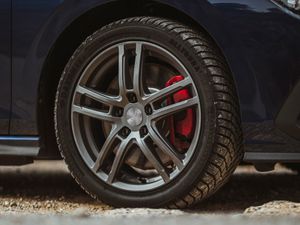Tyres: The facts you may not have known
Tyres make the world go around – but what are the key things to know about them?

Tyres are a vital safety component to your vehicle, as not only do they provide traction, grip and stability, but they enable you to stop in a controlled and safe manner. When it comes to purchasing new tyres, there is an overwhelming array of choices. Summer, winter, four-wheel-drive, snow, eco and performance tyres are all on offer.
But, did you know what the writing on your tyre means? We’ve spoken to the experts at Davanti Tyres to give a clearer understanding and peace of mind about everything that your tyres have to tell.
Product name

>
The most obvious is the product name. Different tyre ranges and patterns are also displayed next to the brand name as well, to give owners the make and model combined– a bit like a badge on a car.
Tyre size
Just because there is a model of tyre, doesn’t mean it comes in one size. The size is defined by letters and numbers to differentiate them from other variants of the same tyre model. The first of three numbers gives out the width. It is measured in millimetres and defines the distance between the inner and outer sidewall of the tyre.
For example, if a tyre says 205/55/R17– the 205 relates to the 205 mm width.
The second number expresses the relationship between the tyre’s sidewall height and its width, shown as a percentage – for instance, with 205/55/R17, the ‘55’ means that the sidewall height, between the top of the tread and the rim, is 55 per cent of the tyre’s width.
The R17 relates to the alloy/wheel trim size– in this instance, R17 refers to a 17-inch wheel.
Tyre construction type and wheel diameter
\
A few examples are if a tyre is labelled with P, it’s for passenger cars. LT stands for light truck, C is for van commercial tyres and Z is for cars which are able to travel to a top speed of 149mph. The ‘R’ on a tyre refers to its radial construction.
The number that is followed, is similar to the tyre size explanation whereby the number refers to the diameter of the rim of the wheel fitted to the vehicle– for example, Z17 would be a car that has a top speed capable of 149 mph with a 17-inch alloy rim fitted.
Maximum load and speed of tyre

>
On the sidewall of all tyres, the maximum load and speed of the tyre, there will be a number followed by a letter.
The speed rating starts from the letter L and goes up to M, N, P, Q, S, T, U, H,V, Z, W, Y and (Y).
Tyres with L labelled on them are for off-road and light trucks, but (Y) is for cars that can achieve top speeds of over 186 mph.
Typically, it will be seen as 91V on a tyre. The 91 collates to the maximum tyre load and the V means that the tyre is fitted to a vehicle that has a maximum top speed of around 149 mph.
A tyre’s maximum loads are measured from 70 to 104 – 70 being a weight of 335 kg and 104 being the heaviest at 900kg.
DOT code

>
DOT stands for Department of Transportation, and it outlines the location of manufacture, tyre size code, the unique identifier for the manufacturer and the year and week of production.
To work your way around the tyre to find out this information, the word DOT will be found on the sidewall and will give an outline of manufacturing. There will be a circled section with four numbers. The first two will refer to the week of the year it was made and the last two numbers will be the year of production, for example, a tyre with ‘4218’ means that it was produced in the 42nd week of 2018.
Other tyre labels
Another label to consider with different types of tyres is the 3PMSF. More commonly found on snow and winter tyres, it’s a marking consisting of a mountain with three peaks and a snowflake. It guarantees a high level of winter performance, as winter tyres have to have an objective test to make them compatible for the job.
M+S is the other label to note. It is more commonly seen on winter and all-season tyres. The M and S stand for ‘Mud’ and ‘Snow’ and unlike 3PMSF, these tyres are not subject to any further testing designed specifically to see how they cope in mud and snow – it is down to the manufacturer that produces the tyre to put it through any additional testing.





